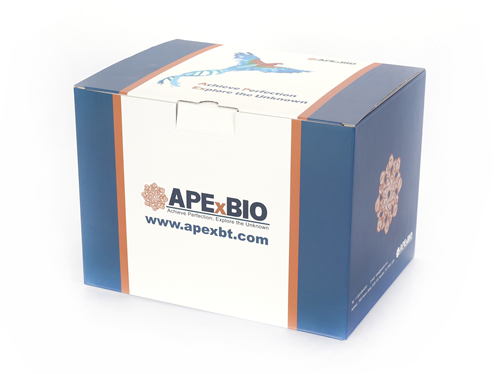- Home
- Signaling Pathways
- GPCR/G protein
- Glucagon Receptor
- Methylprednisolone Sodium Succinate
Methylprednisolone Sodium Succinate
Methylprednisolone sodium succinate is the sodium succinate ester of methylprednisolone which a synthetic corticosteroid with anti-inflammatory and immunomodulating properties [1].?
Methylprednisolone binds to specific nuclear receptors, altering gene expression and reducing proinflammatory cytokine production. Methylprednisolone also decreases the number of circulating lymphocytes, induces cell differentiation, and triggers apoptosis in sensitive tumor cell populations [1].?
In human polymorphonuclear leukocytes, methylprednisolone sodium succinate exerted no effect on O2-· production, H2O2 production, or chemiluminescence at low concentrations (0.04 ~ 0.22 mM), but triggered significant inhibition at a high concentration of 2.7 mM [2]. In human neutrophils, methylprednisolone sodium succinate at a high concentration of 1 mg/ml inhibited chemotactic response [3].?
In the National Acute Spinal Cord Injury Study, methylprednisolone sodium succinate (30 mg/kg bolus followed by 5.4 mg/kg/h infusion for 23 hours) showed no significant differences against the control group overall at 6 weeks. However, the recovery of motor score and sensory touch score at 6 weeks was slightly, but significantly greater in the methylprednisolone sodium succinate-treated group than the placebo group for those treated within 8 hours of injury [4].?
References:
[1]. National Center for Biotechnology Information. PubChem Database. Methylprednisolone, CID=6741, https://pubchem.ncbi.nlm.nih.gov/compound/Methylprednisolone (accessed on July 20, 2020)
[2]. Levine P H, Hardin J C, Scoon K L, et al. Effect of corticosteroids on the production of superoxide and hydrogen peroxide and the appearance of chemiluminescence by phagocytosing polymorphonuclear leukocytes. Inflammation, 1981, 5(1): 19-27.
[3]. Majeski J A, Alexander J W. The steroid effect on the in vitro human neutrophil chemotactic response. Journal of Surgical Research, 1976, 21(4): 265-268.
[4]. Steeves J, Blight A. Chapter 24 - Spinal cord injury clinical trials translational process, review of past and proposed acute trials with reference to recommended trial guidelines. Handbook of Clinical Neurology, 2012, 109: 386-397.
| Physical Appearance | A solid |
| Storage | Store at -20°C |
| M.Wt | 496.53 |
| Cas No. | 2375-03-3 |
| Formula | C26H33NaO8 |
| Solubility | ≥49.7 mg/mL in DMSO; ≥13.1 mg/mL in EtOH; ≥2.94 mg/mL in H2O |
| Chemical Name | sodium 4-(2-((6S,8S,9S,10R,11S,13S,14S,17R)-11,17-dihydroxy-6,10,13-trimethyl-3-oxo-6,7,8,9,10,11,12,13,14,15,16,17-dodecahydro-3H-cyclopenta[a]phenanthren-17-yl)-2-oxoethoxy)-4-oxobutanoate |
| SDF | Download SDF |
| Canonical SMILES | O[C@@]1(C(COC(CCC([O-])=O)=O)=O)[C@](C2)(C)[C@@H](CC1)[C@H](C[C@@H]3C)[C@@H]([C@@](C)(C=C4)C3=CC4=O)[C@H]2O.[Na+] |
| Shipping Condition | Small Molecules with Blue Ice, Modified Nucleotides with Dry Ice. |
| General tips | We do not recommend long-term storage for the solution, please use it up soon. |
Quality Control & MSDS
- View current batch:
Chemical structure














